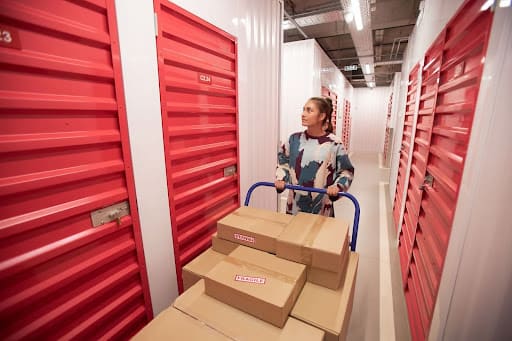This guide will help you understand everything you need to know about storage units, from choosing the right one to making the most of your rented space.
1. Why Use a Storage Unit?
Storage units cater to a variety of needs, including:
Moving: Temporary storage can ease the transition between homes.
Decluttering: Free up space in your home by storing seasonal items or unused belongings.
Business Needs: Store inventory, documents, or equipment.
Hobby Storage: Create space for hobby-related items like tools, sports equipment, or collectibles.
2. Types of Storage Units
There are several types of storage units to choose from, depending on your requirements:
Climate-Controlled Units: Ideal for sensitive items like electronics, documents, and furniture.
Drive-Up Units: Convenient for loading and unloading directly from your vehicle.
Indoor Units: Located within a building, offering additional security.
Outdoor Units: Suitable for larger items, such as vehicles or boats.
3. Factors to Consider When Choosing a Storage Unit
When selecting a storage unit, consider the following:
Size: Estimate the amount of space you’ll need. Units typically range from small (5x5 feet) to extra-large (10x30 feet).
Location: Choose a facility close to your home or business for easy access.
Security: Look for features like surveillance cameras, gated access, and individual locks.
Accessibility: Consider facilities with 24/7 access or extended hours.
Cost: Compare rates and consider promotions or discounts.
4. Tips for Maximizing Your Storage Space
To make the most of your storage unit, follow these tips:
Plan Ahead: Create an inventory of items you’re storing.
Use Uniform Boxes: Stackable boxes maximize vertical space.
Label Everything: Clearly label boxes for easy identification.
Disassemble Large Items: Break down furniture to save space.
Utilize Shelving: Portable shelves help organize smaller items.
Protect Belongings: Use covers and plastic wrap to shield items from dust.
5. What Can’t Be Stored in a Storage Unit?
Most storage facilities have restrictions on what can be stored, including:
Perishable items (food or plants)
Hazardous materials (flammables, chemicals, explosives)
Illegal items
Animals or pets
Always check the facility’s policies before storing your items.
6. How to Maintain Your Storage Unit
To keep your belongings safe and organized:
Visit regularly to check on your items.
Ensure boxes and items are off the ground in case of leaks.
Use moisture absorbers to prevent mold or mildew.
7. Benefits of Renting a Storage Unit
Renting a storage unit offers:
Flexibility: Short-term or long-term rental options.
Security: Peace of mind knowing your belongings are safe.
Convenience: Access your items whenever you need them.
8. Storage Unit Trends to Watch
The storage industry continues to evolve, with trends such as:
Smart Units: Facilities with app-based access and remote monitoring.
Eco-Friendly Storage: Facilities designed with sustainability in mind.
Specialized Storage: Options tailored for wine, art, or luxury items.
Conclusion
Storage units are a practical and versatile solution for anyone looking to manage space more effectively. By choosing the right type of unit and following best practices, you can ensure your belongings remain safe and organized. Whether you're planning for a short-term need or long-term storage, the right facility can provide convenience and peace of mind.
Disclaimer: This content was written with AI along with human verification.

